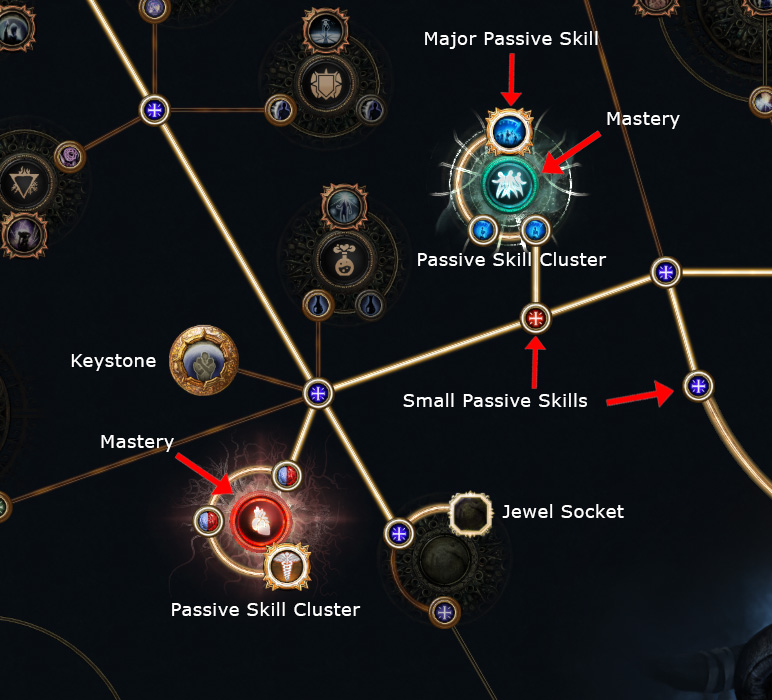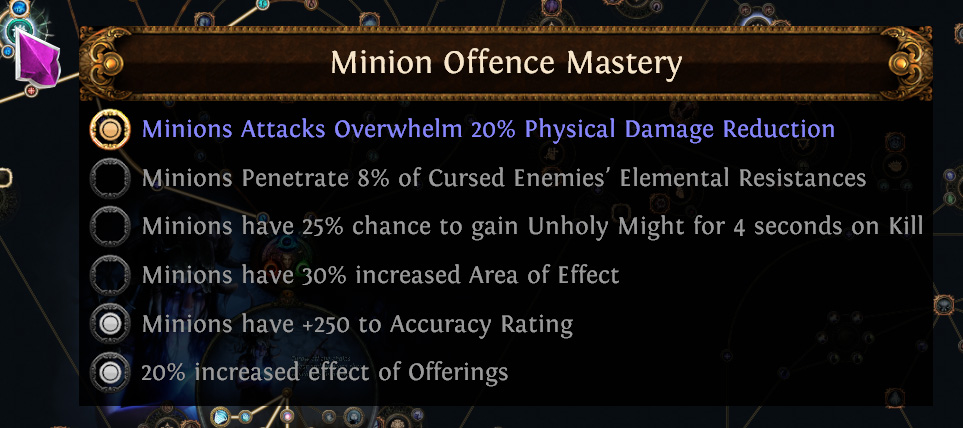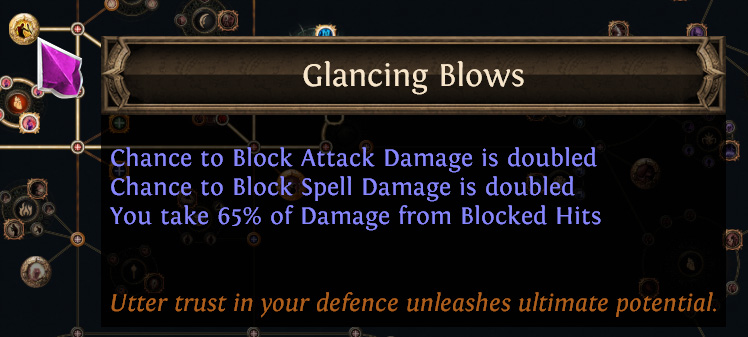Beginners Guide for Path of Exile: Learning the Passive Tree
Introduction
When you first start playing Path of Exile and open the Passive Skill Tree (P), you might feel pretty overwhelmed, but let it not scare you off. Instead, we will explain that it’s not that difficult.

Every time you level up or complete specific quests, your character is rewarded with a Passive Skill Point that you can use to allocate passive bonuses to your character. Your character can acquire 99 passive skill points from levels, and 23 or 24 skill points from quests (depending on which ally you side with in the quest Deal with the Bandits). You also get 20 skill refund points from quests, should you make a mistake.
As mentioned above, Path of Exile’s skill tree could look intimidating, but there are some methods to understand it better.

If we divide the passive tree roughly into three slices of a pie, each slice has many nodes related to one of the core attributes. While this is not an absolute rule, it is a helpful way to gain insight into how the Passive Tree works.
The core attributes of classes are:
| Attribute | Color |
| Strength | Red |
| Dexterity | Green |
| Intelligence | Blue |
All classes have core attributes. For example, the Witch uses intelligent Skill Gems that are blue. Looking at the Skill Passive Tree divided, you see that the top section of the tree is mainly blue and has the Witch starter area. This gives you a rough idea of where your skill points section will be and you basically can ignore the other parts of the tree as you define the part of the Skill Tree that you use by your starting area.
An example of a Passive Skill tree points allocation.

When you follow one of our build guides, these Passive Skill Tree points will already be allocated for you, and you simply follow the guide. It’s recommended not to deviate from the guide.
Passive Nodes Explained.
The Passive Skill Tree has arrangements of clusters that can have several bonuses to your build.

5 different types of Passive Skill Tree nodes can be allocated:
- Small Passive Skills
- Major Passive Skills, also called Notables
- Masteries
- Keystones
- Jewel Sockets
Small Passive Skills
These provide minor bonuses, such as attributes, and are needed to reach other types of nodes. The attributes contribute to your overall stats and are necessary for your items and skills.
Major Passive Skills
These provide significant passive bonuses and are primarily located at the end of a cluster. Allocating these passives also allows you to take a mastery bonus for that cluster.
Masteries
Masteries provide specific passive bonuses that will unlock when you allocate a Major Passive Skill. They have different mod pools depending on where you are on the Passive Tree. You can only allocate one bonus per mastery node, but different mod pools share some of the same masteries. For example, in the image below, we can select a minion-specific mastery.

Keystones
Keystones provide unique Passive Tree skill bonuses, but will come with a downside. They can significantly boost your character with a massive buff, but you need to consider if the downside is worth it. Luckily, our guide writers have taken that consideration into account for you!

Jewel Socket
Jewel sockets are nodes that, when you allocate them, you can socket a jewel in like  Cobalt Jewel or
Cobalt Jewel or  Ghastly Eye Jewel. Jewels can be craftable rares or unique items that grant bonuses when they are socketed in.
Ghastly Eye Jewel. Jewels can be craftable rares or unique items that grant bonuses when they are socketed in.
Refund Passive Skills
If you made a mistake or you want to take other passive skill points, you can use your refund points that you got from completing quests in the campaign. If you run out of refund points, you can use an  Orb of Regret. These can be expensive early on in a league, so try not to waste them unless necessary.
Orb of Regret. These can be expensive early on in a league, so try not to waste them unless necessary.


